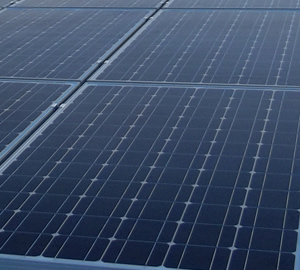Understanding solar systems
Solar photovoltaic systems, or PV systems for short, use solar panels to convert sunlight into electricity. Panels consist of cells, which are made of either one or two layers of semi-conducting material, usually silicon. When light shines on the cell an electric current is induced across the layers- the stronger the sunlight, the more electricity is produced.
PV panels are available in a variety of shapes and colours. The most cost-effective type are rectangular 55-250 Watt panels. They have a dimension of around 1.6m x 1m and weight approximately 12-30kg. Panels can be integrated into a roof, fastened on top or even installed as part of a glass facade.
Rooftop systems
Rows of solar panels are installed on a roof to silently generate electricity from sunlight. We will install the inverter system and connect it to the Grid. Since solar panels have very few moving parts, PV systems are almost maintenance-free.

In-roof systems
In-roof solar systems provide the same benefits as rooftop systems, but with improved visual appearance and minimal planning requirements. In-roof installations are ideal for a new or renovated roof as some of the cost of the system can be offset against the saving of fewer tiles.
Ground-mounted systems
Ground-mounted, or free-field, PV systems work in exactly the same way as roof systems, but are usually in demand for commercial purposes. Panels are installed on ground-mounted structures that can be easily orientated to maximise energy capture and at a height to suit the surrounding area. The structures require only minimal foundations, and can even be raised to allow grazing underneath.